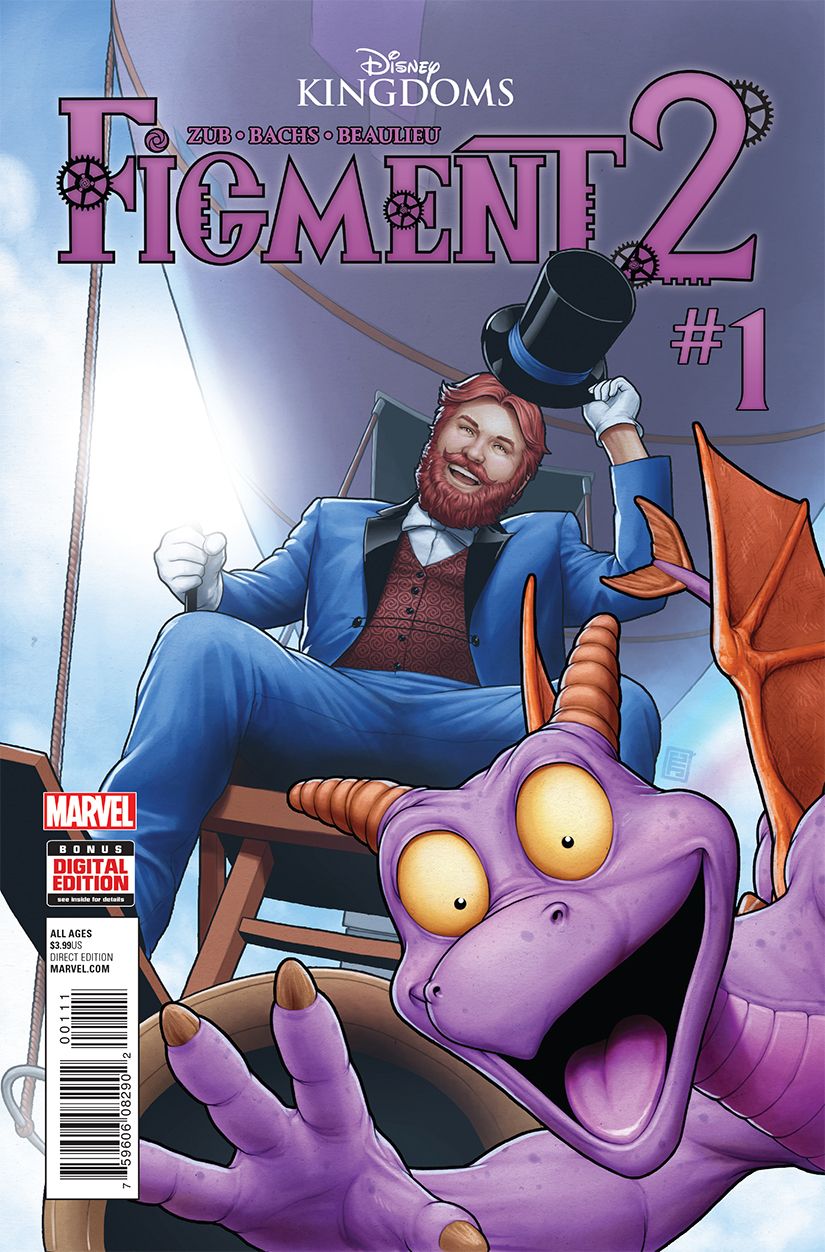Written by Jim Zub, drawn by Ramon Bachs, colored by Jean-Francois Beaulieu and lettered by Joe Caramagna, "Figment 2" #1 picks up where the first miniseries left off. Figment and Blarion Mercurial, also known as Dreamfinder, set out on new adventures in this all-ages read as the story takes them into the modern day.
The duo return to Academy Scientifica-Lucidus, which is now located in Florida on a "big plot of land." Keen-eyed readers or lifelong Disney fans will find "Figment 2" #1 packing at least a couple references to Disney history, even beyond the geodesic sphere that matches the centerpiece of the EPCOT's Future World. The sphere takes the center spotlight for this story once Zub gets past the introductions and exposition. Unfortunately, however, the exposition takes up the first half of "Figment 2" #1.
Through that process, Figment is marginalized in his book, which has a spark of imagination but lacks the hook to let that spark erupt into something more. Zub makes the story friendly and quaint and packs it with lots of personality, but Figment seems to be around only for one-liners or to paint some depth into scenes through minimalistic dialogue.
In the introduction, Zub sets up the current status quo for the Academy and introduces readers to Chairman Auckley, the stickiest of sticks in the mud. In contrast to Auckley's gruff personality, however, the issue opens on a note of hope with Capricious Aloysia Harmony, a young girl who has dreams of joining the Academy despite her age. Parents will be able to relate to Capri's seemingly impossible dreams and younger readers will surely find empathy in her disappointment, but both of those emotions are what fuels imagination. Capri will undoubtedly play a larger role in the adventures to come but, for now, she's simply introduced and sent to the bench.
In that opening scene, however, Ramon Bachs packs emotion and vibrant, over-the-top energy in simple gestures, giving readers plenty to absorb. Bachs' characters are animated but still believable, more like caricatures than cartoons. The world they inhabit is intricately detailed and Bachs uses dynamic establishing shots, all of which plays into the world of Figment. When the little purple dragon hits the page, readers are comfortable enough with Bachs' style that the imaginary critter just slots right in.
Jean-Francois Beaulieu's colors are a glorious mix of prescribed comic book boldness and atmospheric watercolors, gently molding depth and form to Bachs' drawings. The Academy is magnificently colored to describe the sunlight glancing off the steeped glass panels and the sunset in the issue's closing scene is picture-perfect. Figment is purple and orange, as he should be, but everyone else is believably normal, save Fye, who returns from the first Figment mini.
As Bachs and Beaulieu play with the visions present in "Figment 2" #1, the duo seem to encourage letterer Joe Caramagna, who gets a chance to flex his imagination. Employing variation of dialogue pacing, word balloon placement and volume emphasis in those balloons, Caramagna offers readers a complete lettering reference in one issue. The issue also calls for a wide array of sound effects and Caramagna includes a few colored words for emphasis. Those words are presented in eye-catching red and are barely contained by their word balloons, fully transmitting the intent of the speaker.
Unfortunately, the story in "Figment 2" #1 is not as whimsical as Figment himself, as it goes to great lengths to establish the characters, the Academy and the mystery to be investigated further over the course of this series. It does have moments of fun, however, and is a nice, clean package ready for all ages to thoroughly enjoy. , However, younger readers and those with shorter attention spans might find the issue lacking, though Zub and Bachs give the little dragon enough fun moments to encourage readers to return next issue when the action hopefully picks up.

